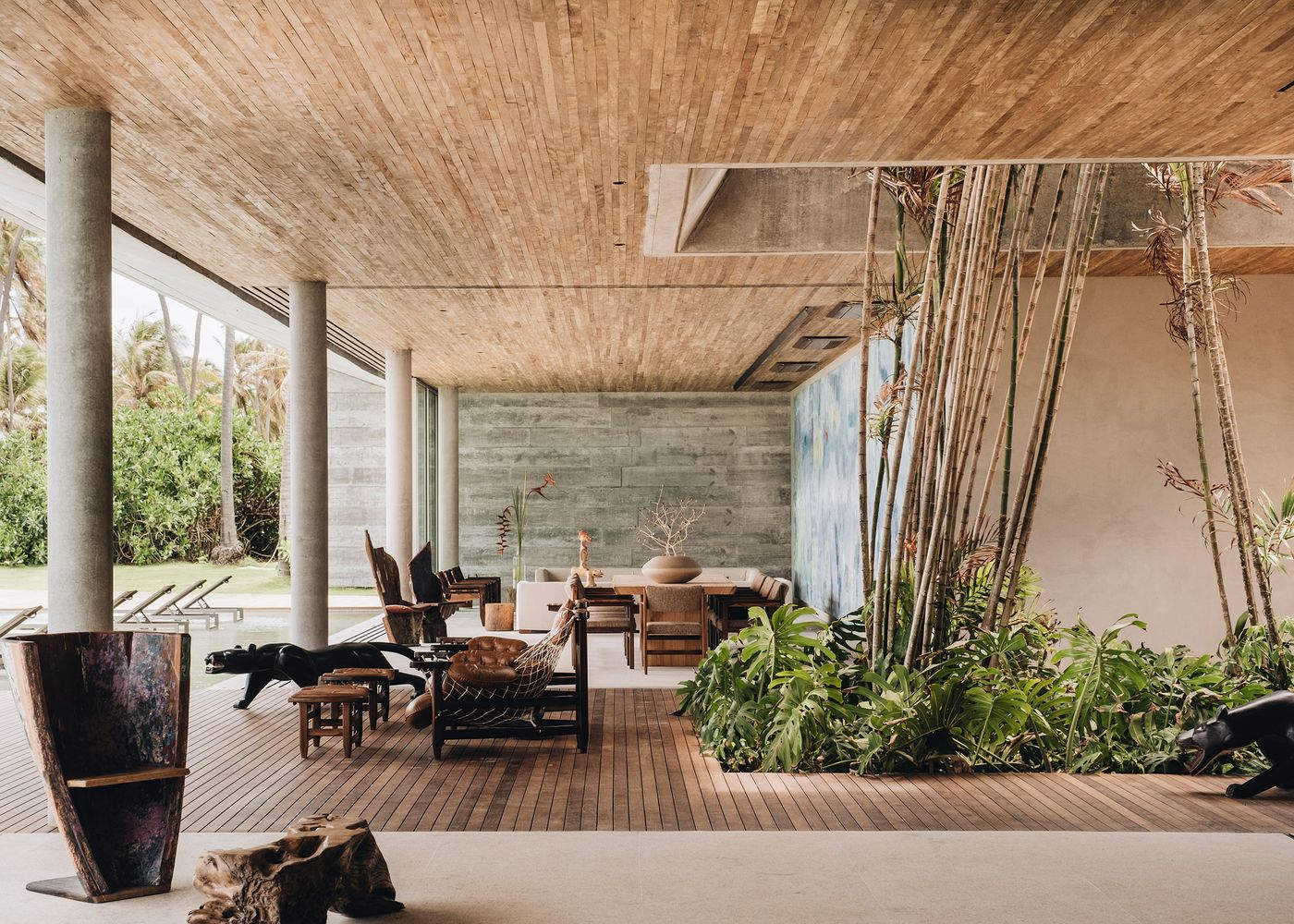
Reserva Pituba Beach Club: A Study in Quiet Luxury on the Brazilian Coast
Words by Yatzer
Location
Alagoas, Brazil
Reserva Pituba Beach Club: A Study in Quiet Luxury on the Brazilian Coast
Words by Yatzer
Alagoas, Brazil
Alagoas, Brazil
Location
Nestled amongst swaying coconut palms and white sands in Brazil’s northeastern state of Alagoas, the Reserva Pituba beach club is a quietly luxurious tropical retreat that balances contemporary minimalism with vernacular nuance. Designed by São Paulo-based architects UNA Barbara e Valentim with interiors by Estudio Obra Prima, the low-slung concrete structure blends brutalist clarity with tactile warmth, pairing earthy tones, natural materials and sculptural furnishings with an artisanal touch. The result is a space that feels curated yet uncontrived, modern in language, and deeply attuned to its coastal setting.
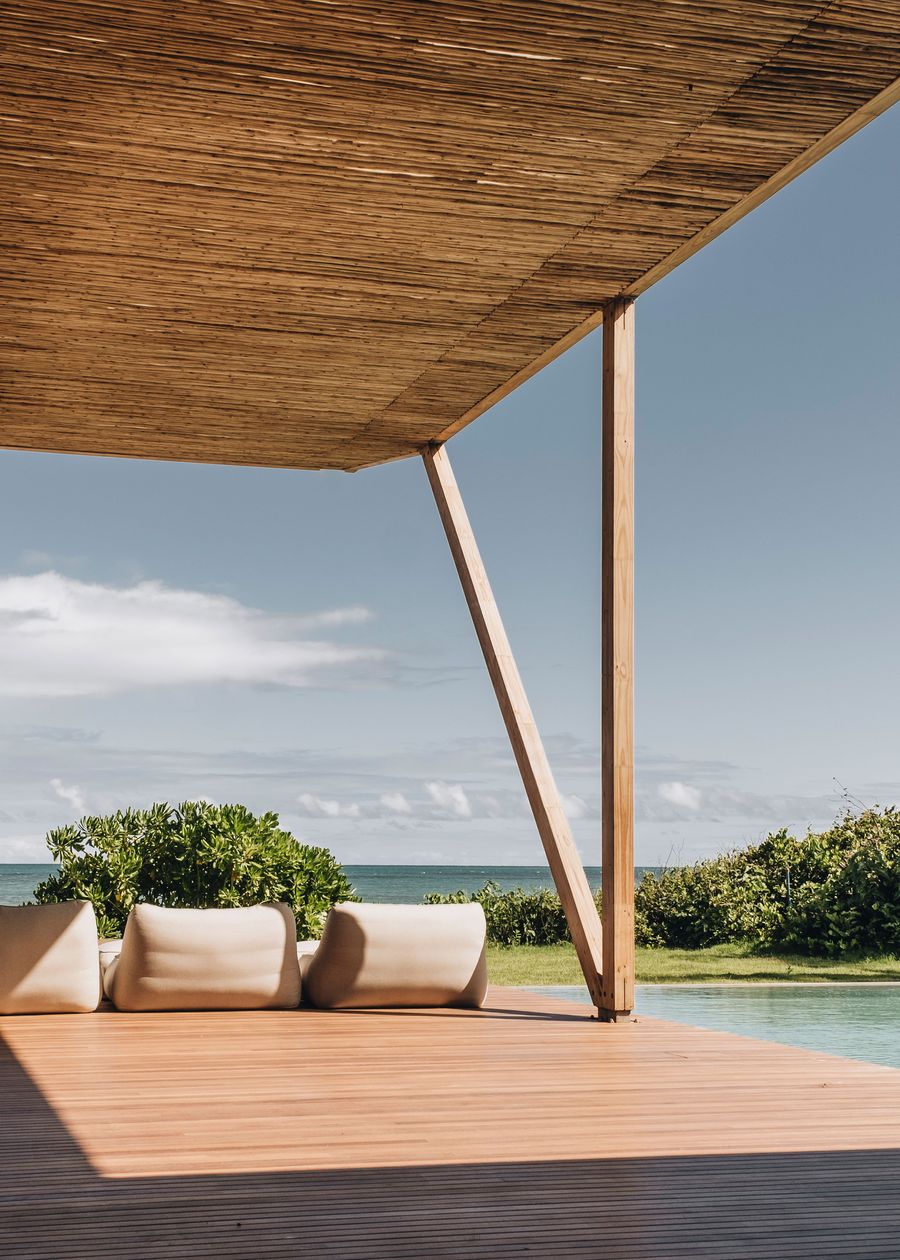
Photography by Victor Collor.
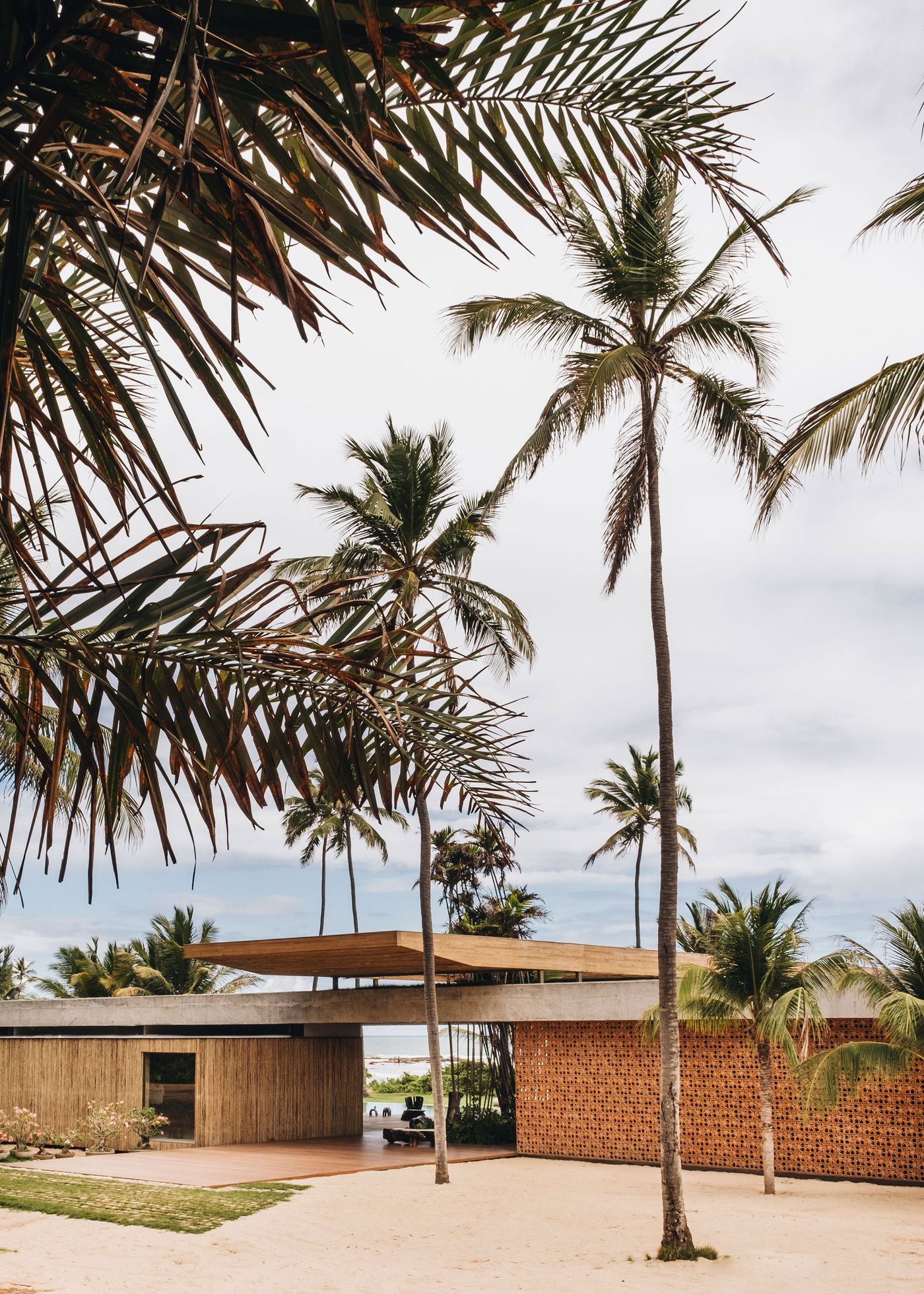
Photography by Victor Collor.
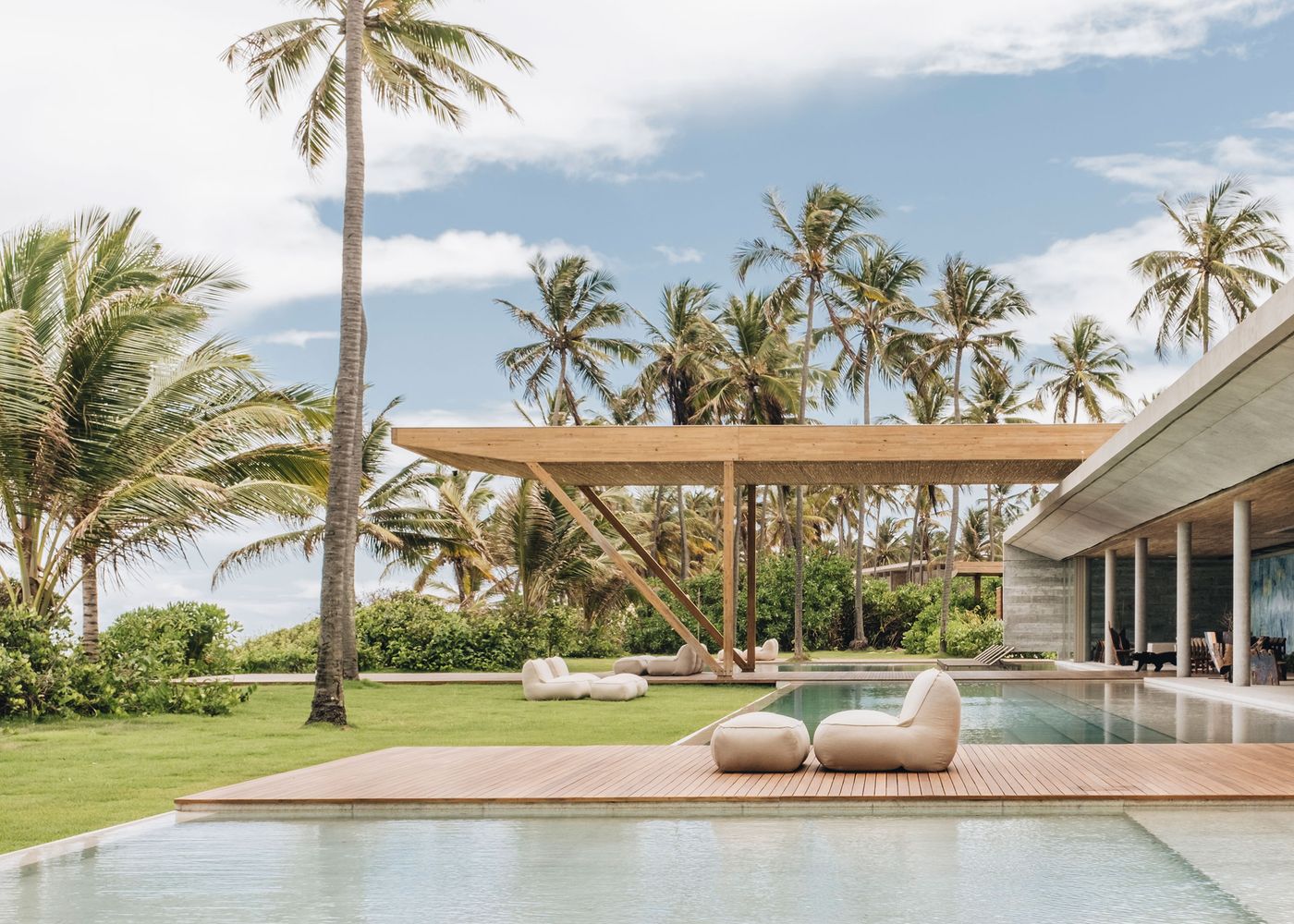
Photography by Victor Collor.
Part of the larger Reserva Pituba development, a nature reserve turned private enclave of summer residences, the beach club acts as the community’s social heart housing a restaurant, bar, lounge area, changing rooms, and multiple pools. Resisting monumentality, the pavilion-like volume stretches horizontally along the coast, hugging the terrain with discretion and subtlety. A planted roof and restrained proportions allow it to nearly vanish into the scenery when viewed from the beach, underscoring the architects’ commitment to lightness and deference.
Adopting a linear footprint, the beach club’s layout maximizes sea views while orchestrating a rhythm of movement and stillness. A wooden deck cuts across the social spaces, linking the rear entrance to the shoreline in a gentle procession. Shaded by a bamboo-clad pergola and softened by lush planting, this axis subtly delineates the dining area from the lounge area without breaking their visual or spatial continuity. A series of pools that extend beneath the roofline cast ripples of light onto timber-clad ceilings, animating the beach club’s shaded spaces with a sense of quiet vitality.
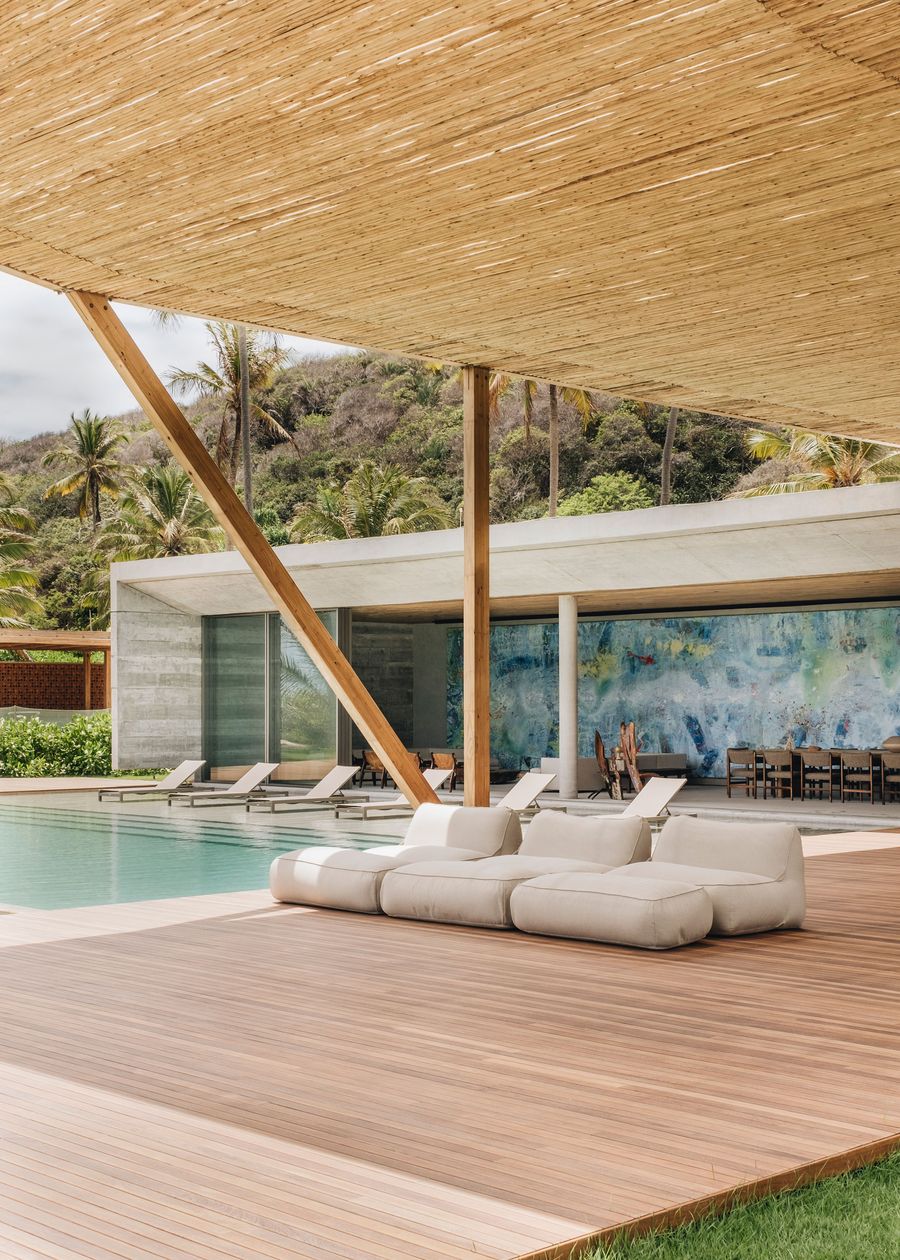
Photography by Victor Collor.
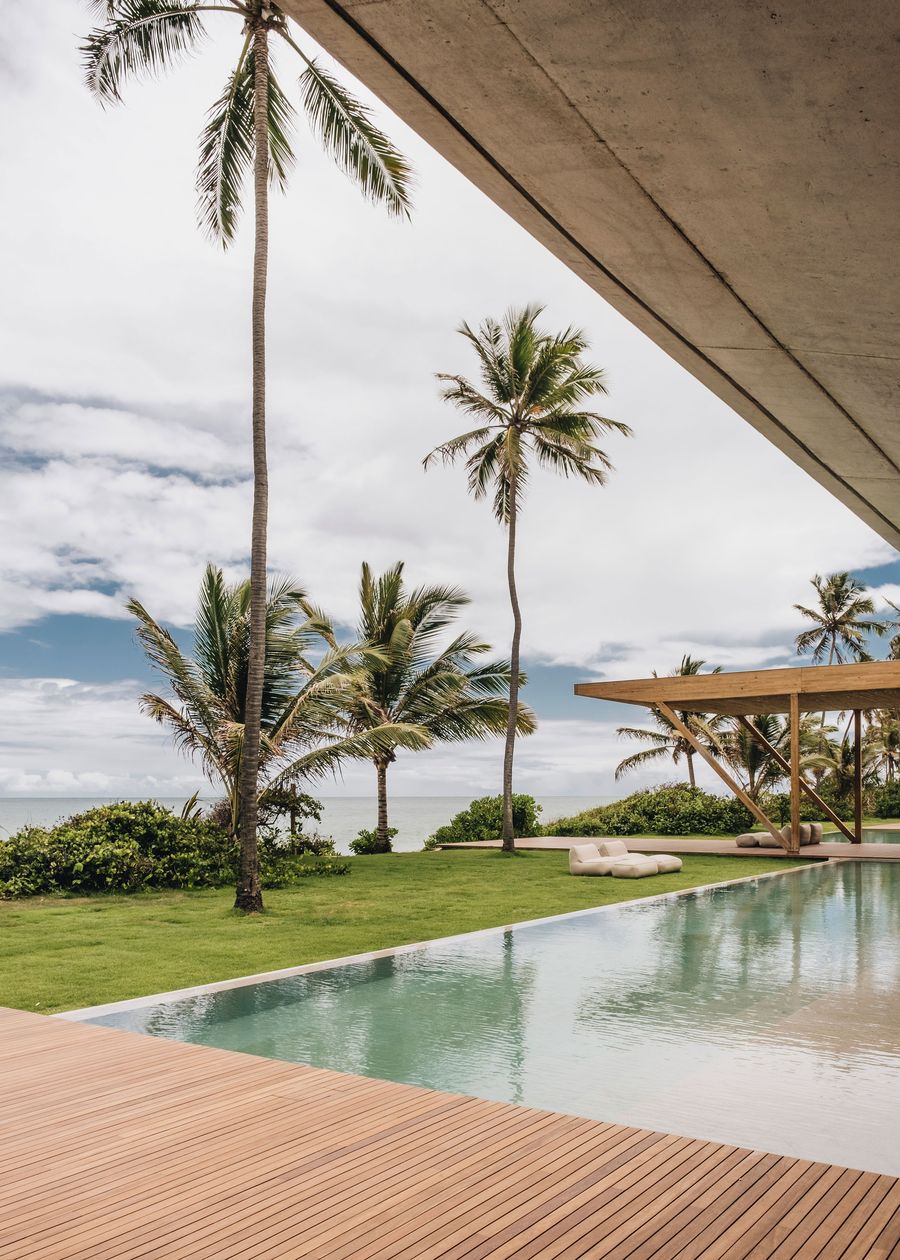
Photography by Victor Collor.
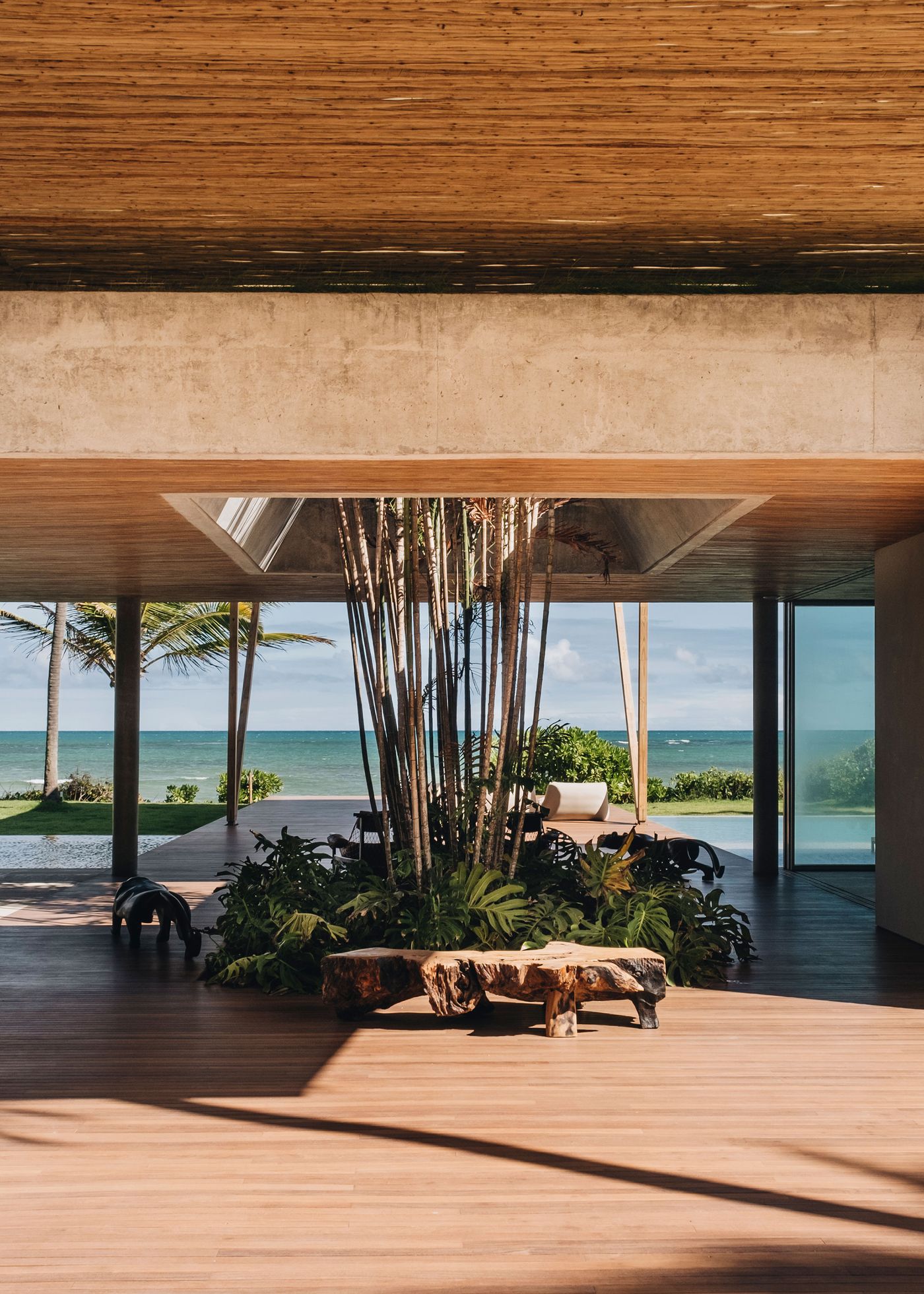
Photography by Victor Collor.
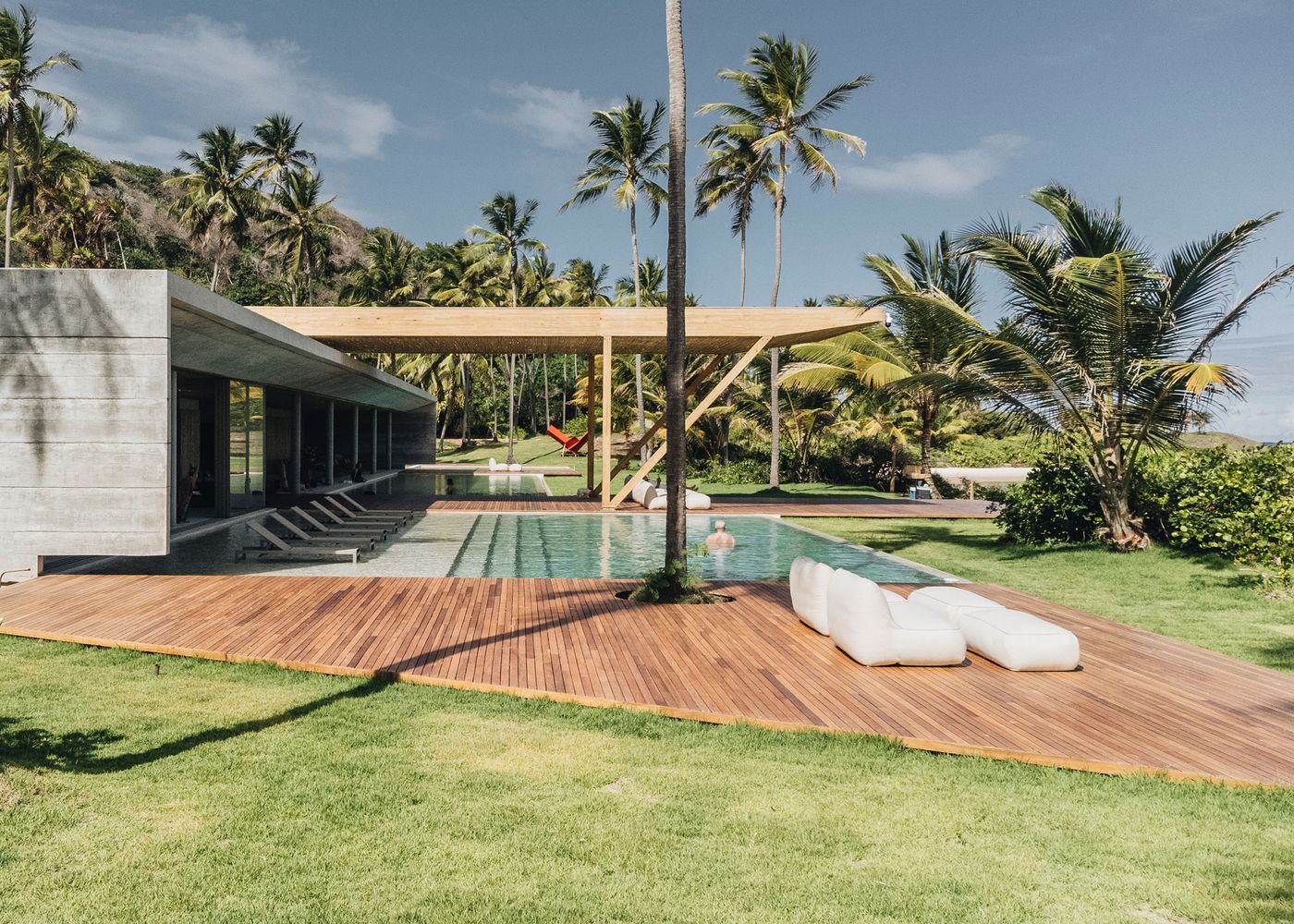
Photography by Victor Collor.
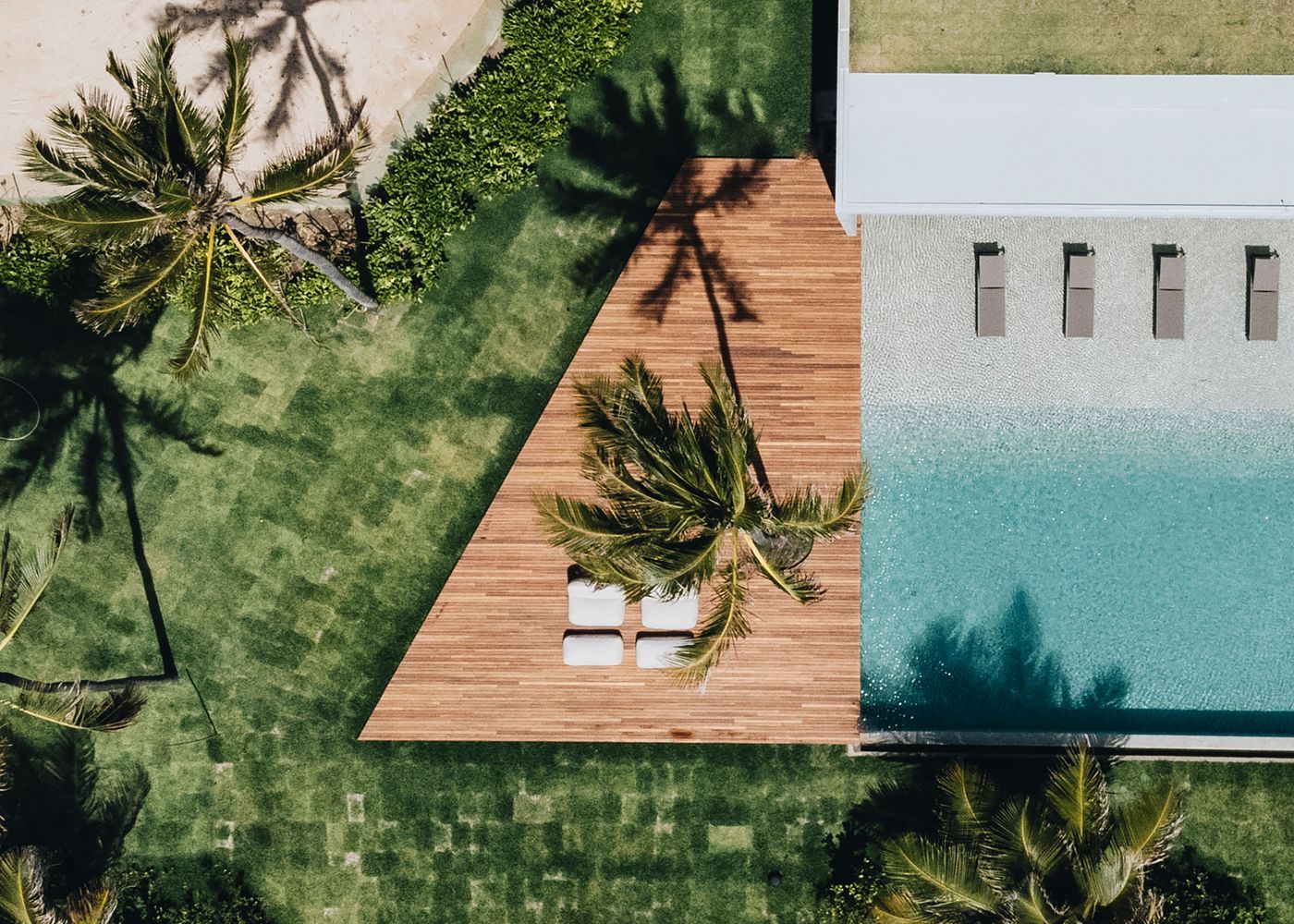
Photography by Victor Collor.
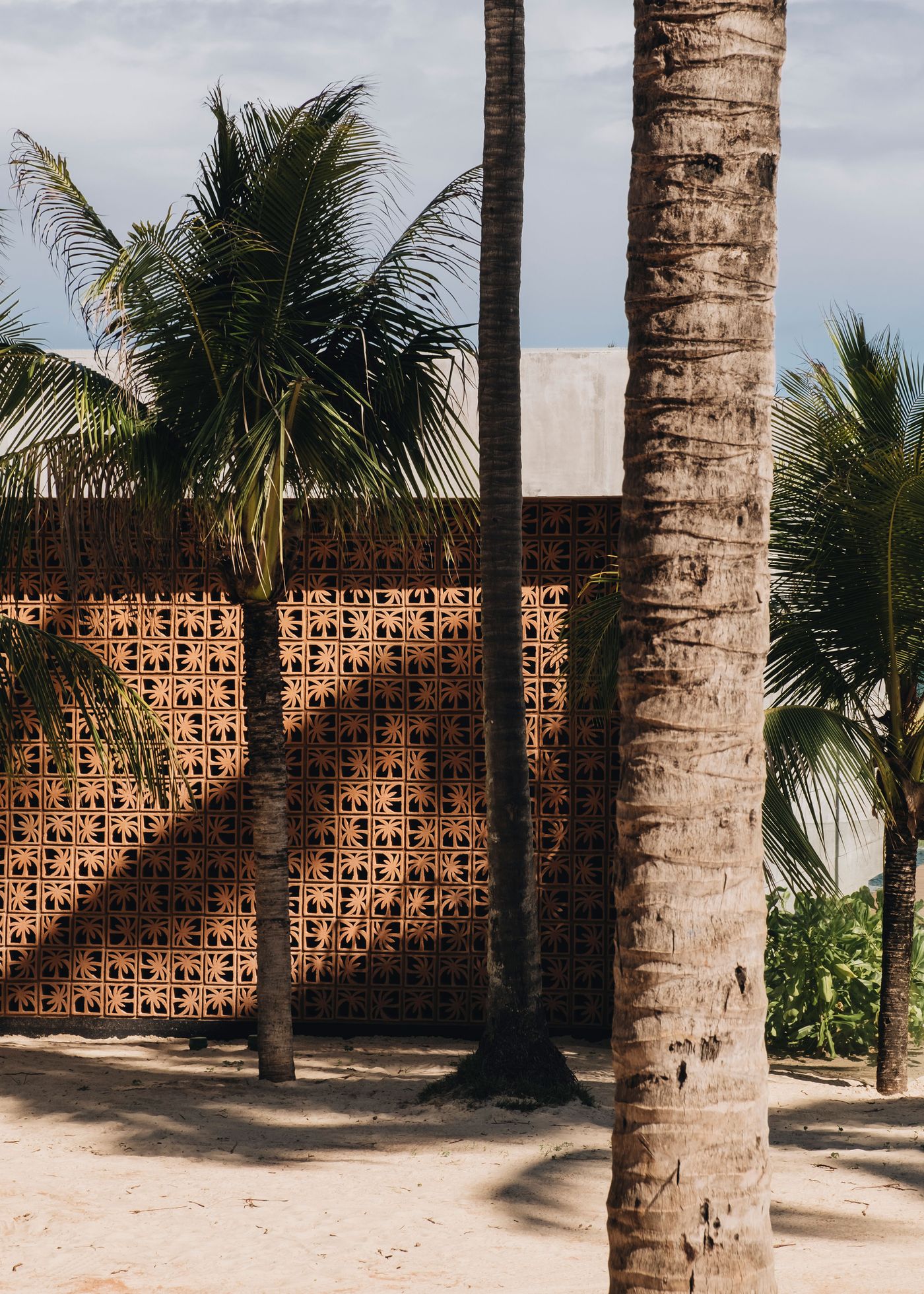
Photography by Victor Collor.
The interplay between raw concrete and warm wood creates a deliberate dialogue of textures. From the ceiling slats to the decking and custom furnishings, timber brings softness and tactility, while concrete provides a sense of permanence. This tactile contrast is further enriched by the use of cobogós, a traditional breeze-block made in this instance in terracotta. Custom-designed specifically for the project by Estudio Campana, the design studio of famed Brazilian duo Fernando & Humberto Campana, the blocks draw inspiration from the surrounding coconut palms, their botanical motif filtering light and air while casting ever-changing shadows across the changing rooms.
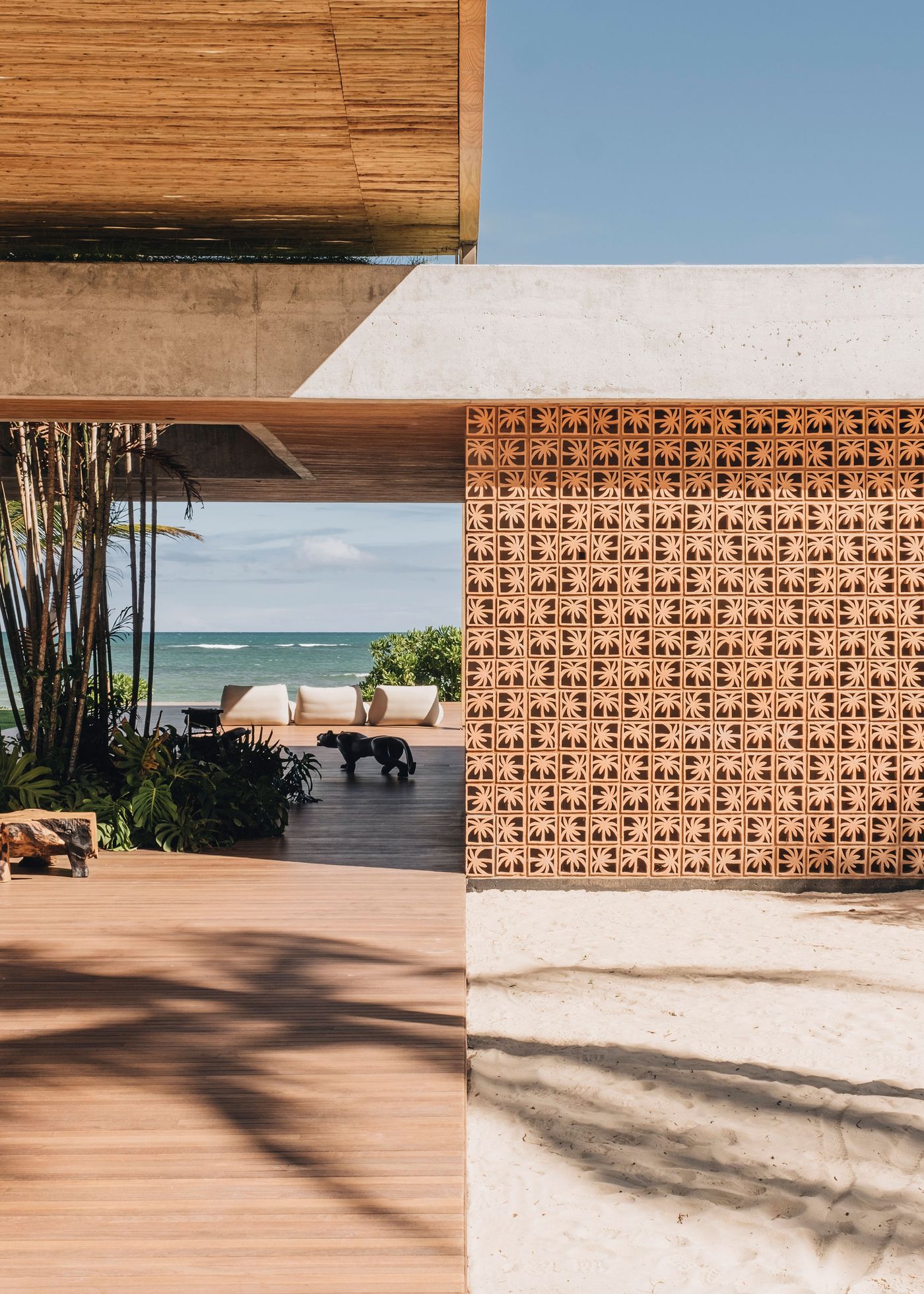
Photography by Victor Collor.
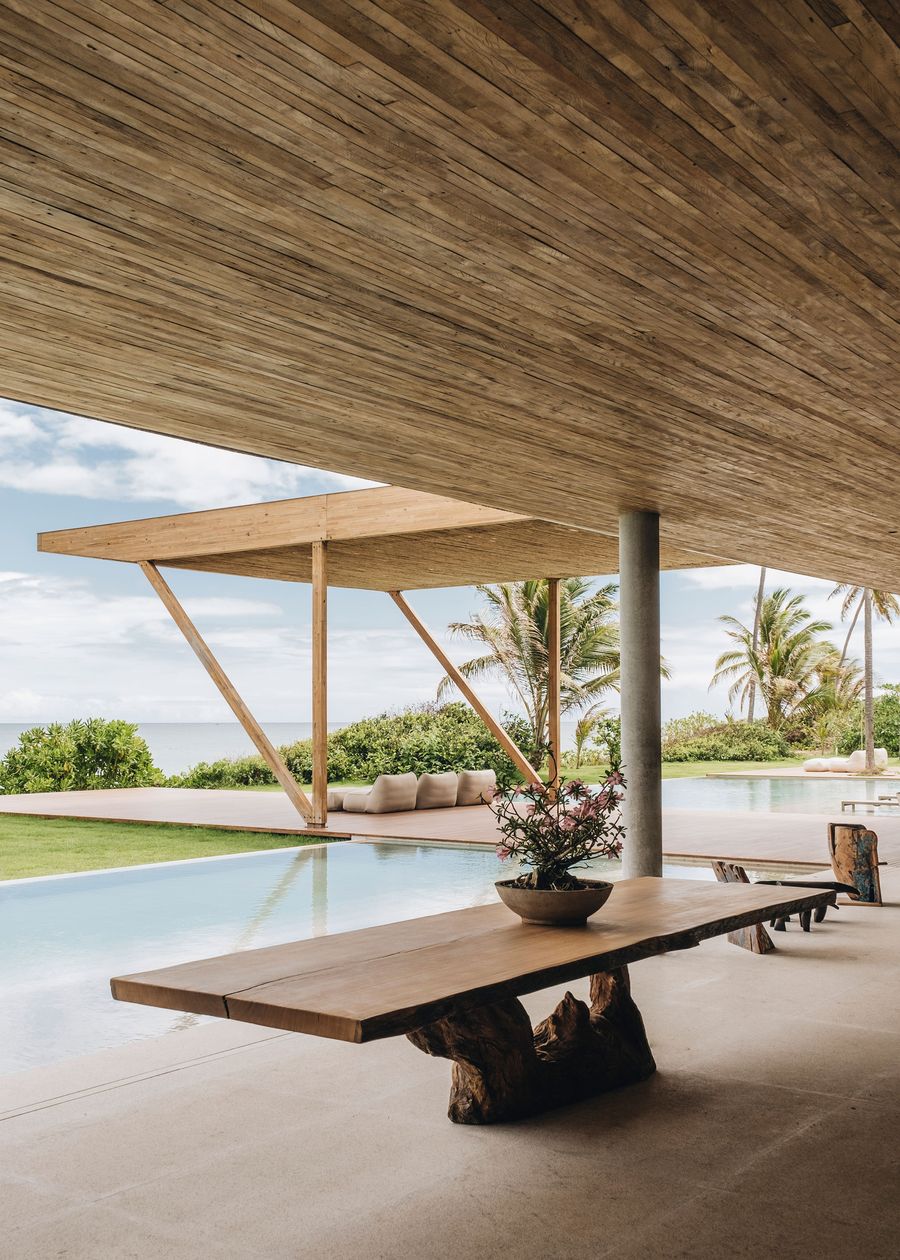
Photography by Victor Collor.

Photography by Victor Collor.
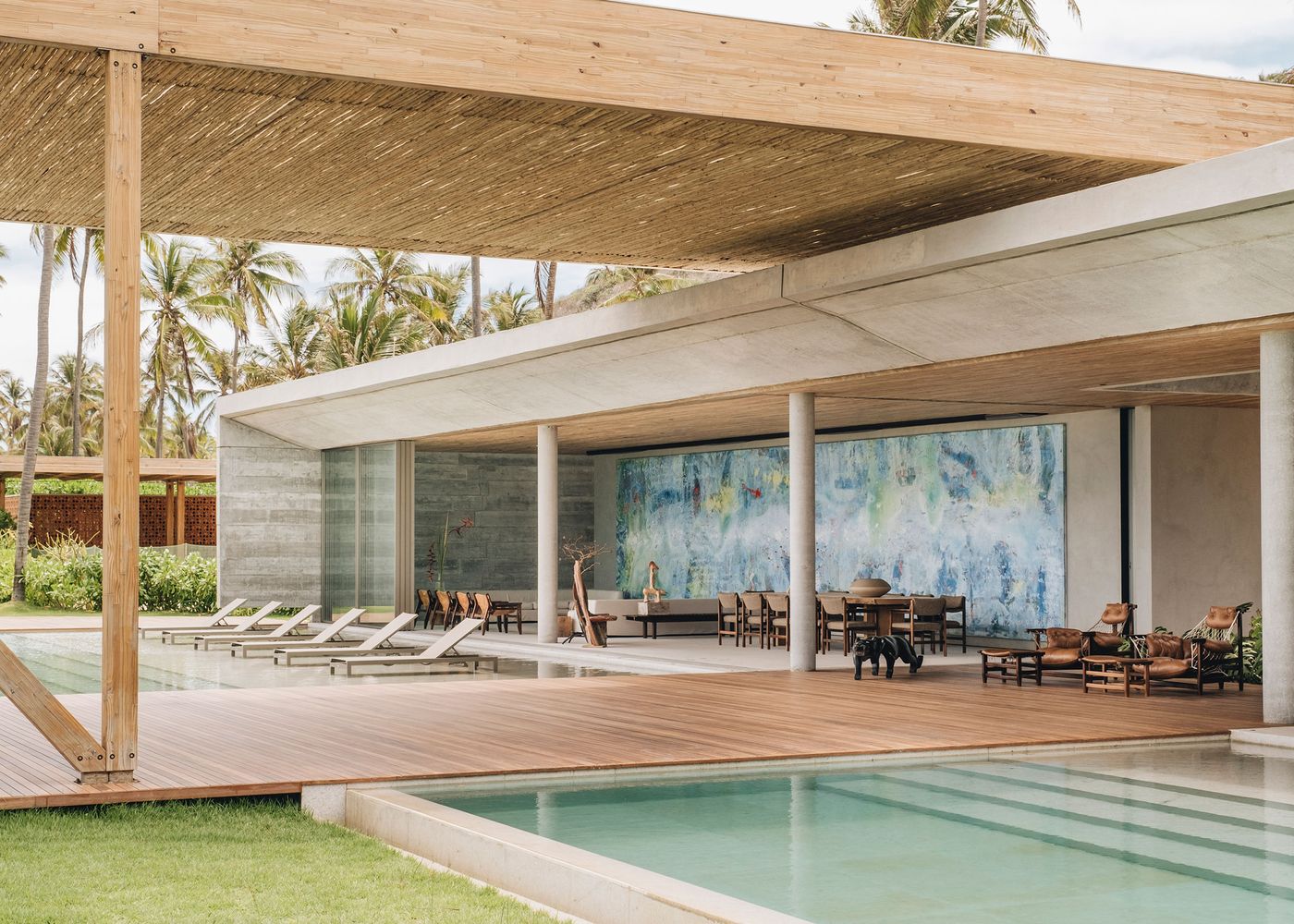
Photography by Victor Collor.
Estudio Obra Prima’s scheme reinforces the architectural language rather than competing with it. Their choice of low, sculptural furniture in leather, wood, and rope, combined with handcrafted decorative objects and raw ceramics, lends the social areas a grounded elegance. Art is also used to great effect: In the lounge area an expansive abstract mural introduces a layer of artistic depth, its vibrant palette of blues reflecting the sea and sky with a quietly expressive dynamism.
With its thoughtful proportions, contextual materials, and seamless interplay between shelter and landscape, the Reserva Pituba Beach Club stands as a testament to architecture’s capacity to create projects with an ingrained peaceful and quiet impact. In a region defined by exuberant nature, this understated intervention proves that less, when shaped with care, can resonate even more deeply.
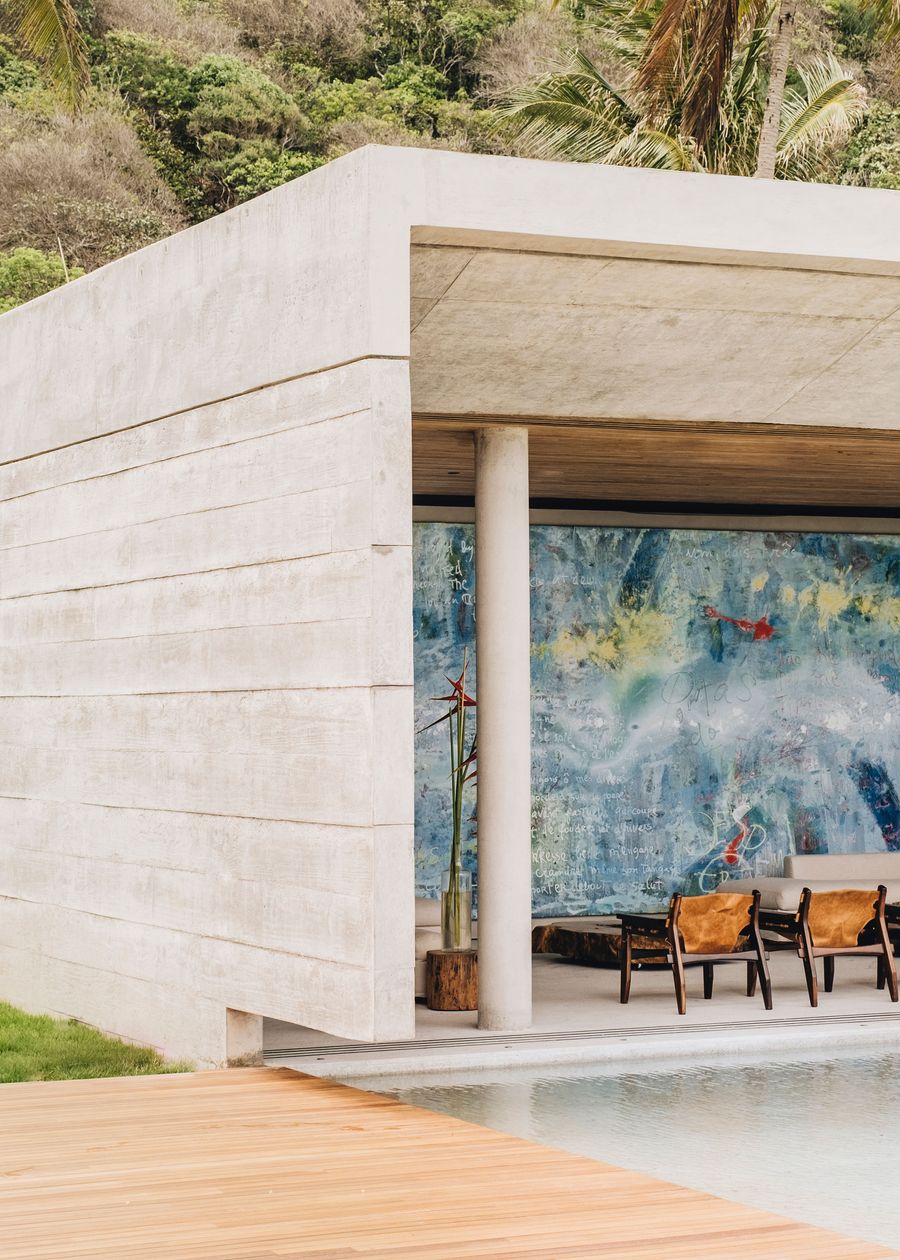
Photography by Victor Collor.
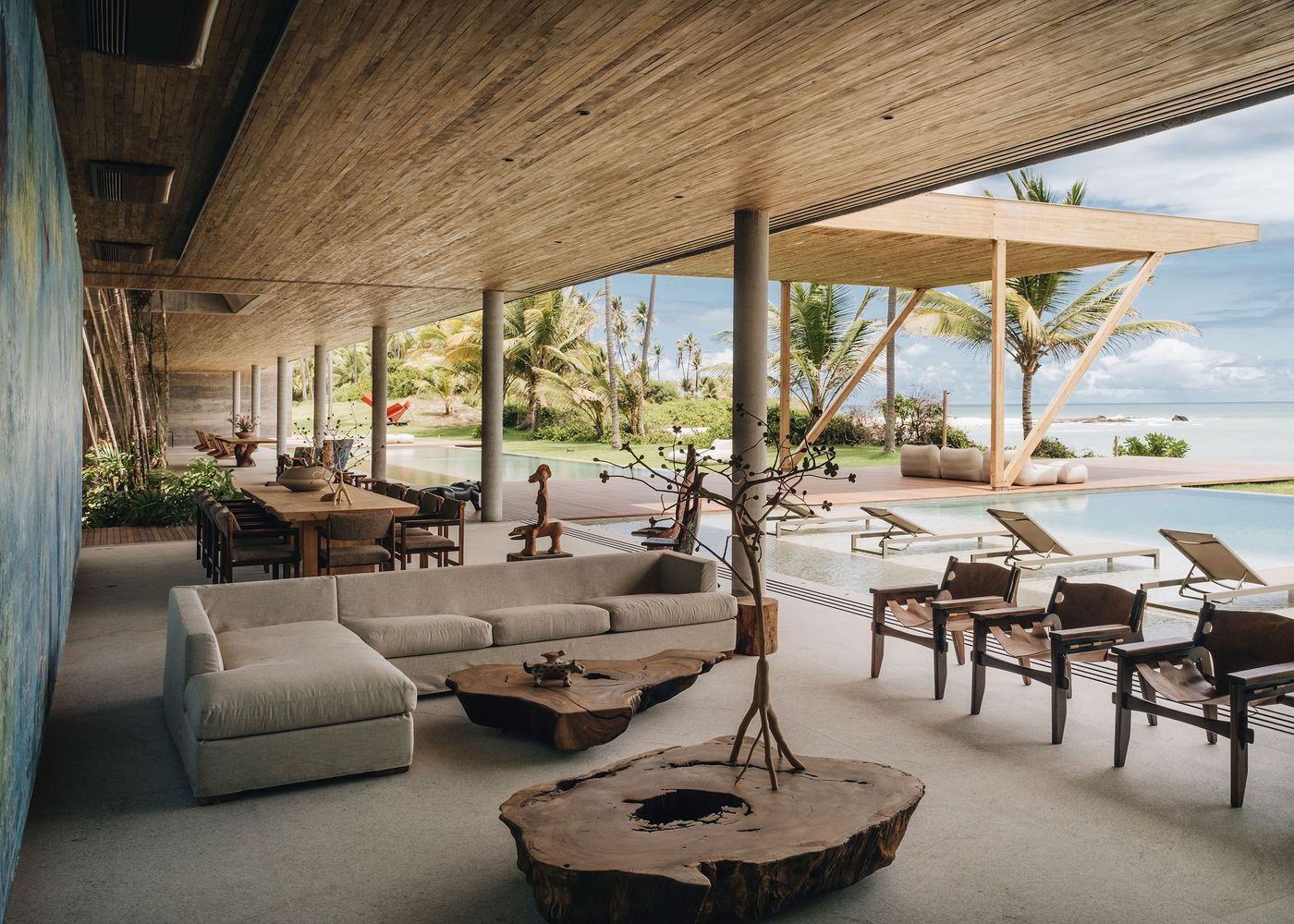
Photography by Victor Collor.
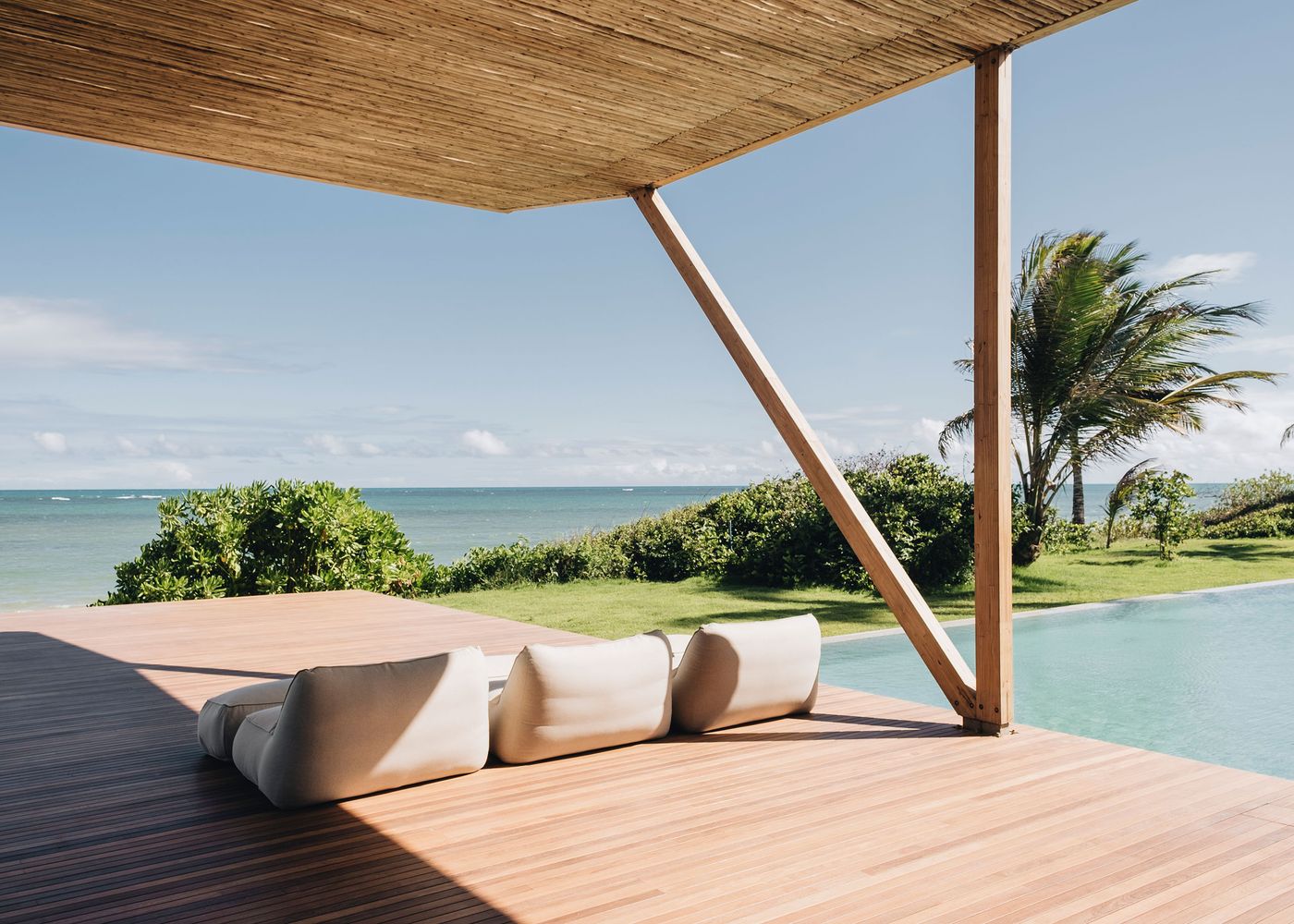
Photography by Victor Collor.
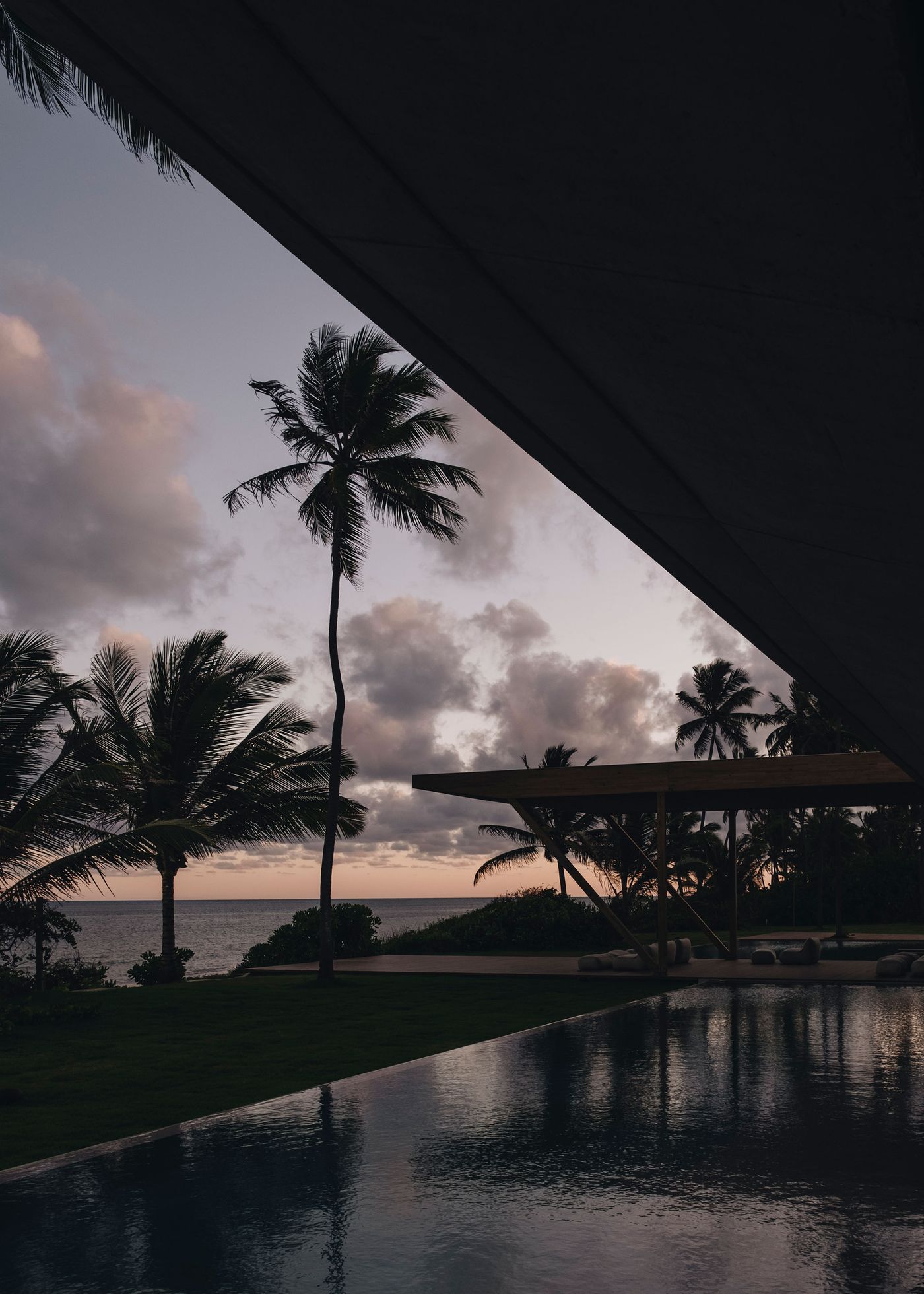
Photography by Victor Collor.